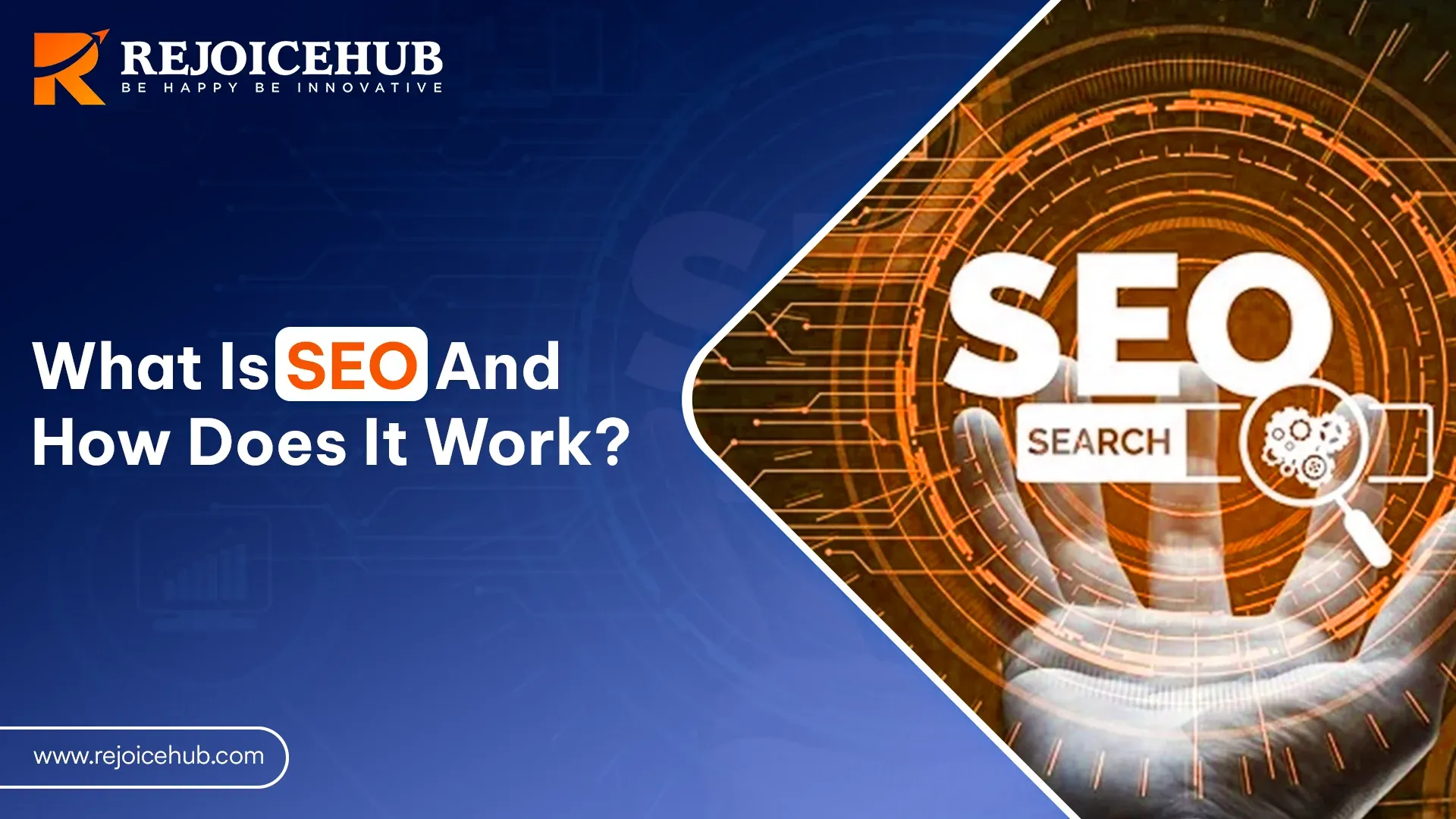
SEO is a practice that involves improving the content on your web page or website(s), so that it can be picked up by search engines like Yahoo! Or Google as one of the results whenever there is a relevant query.
It is a fancy cocktail of techniques involved in making a site discoverable and relevant to the algorithms of search engines.
These techniques include mobile optimization, on-page optimization, keyword optimization, and Link Building, to name a few. These techniques ultimately help in your website becoming more discoverable to searchers, which helps to drive more traffic, boost your brand visibility, and even drive conversions.
How Do Search Engines Work?
In essence, search engines crawl and index. In order to understand how does search engine optimization work, it is crucial to understand this.
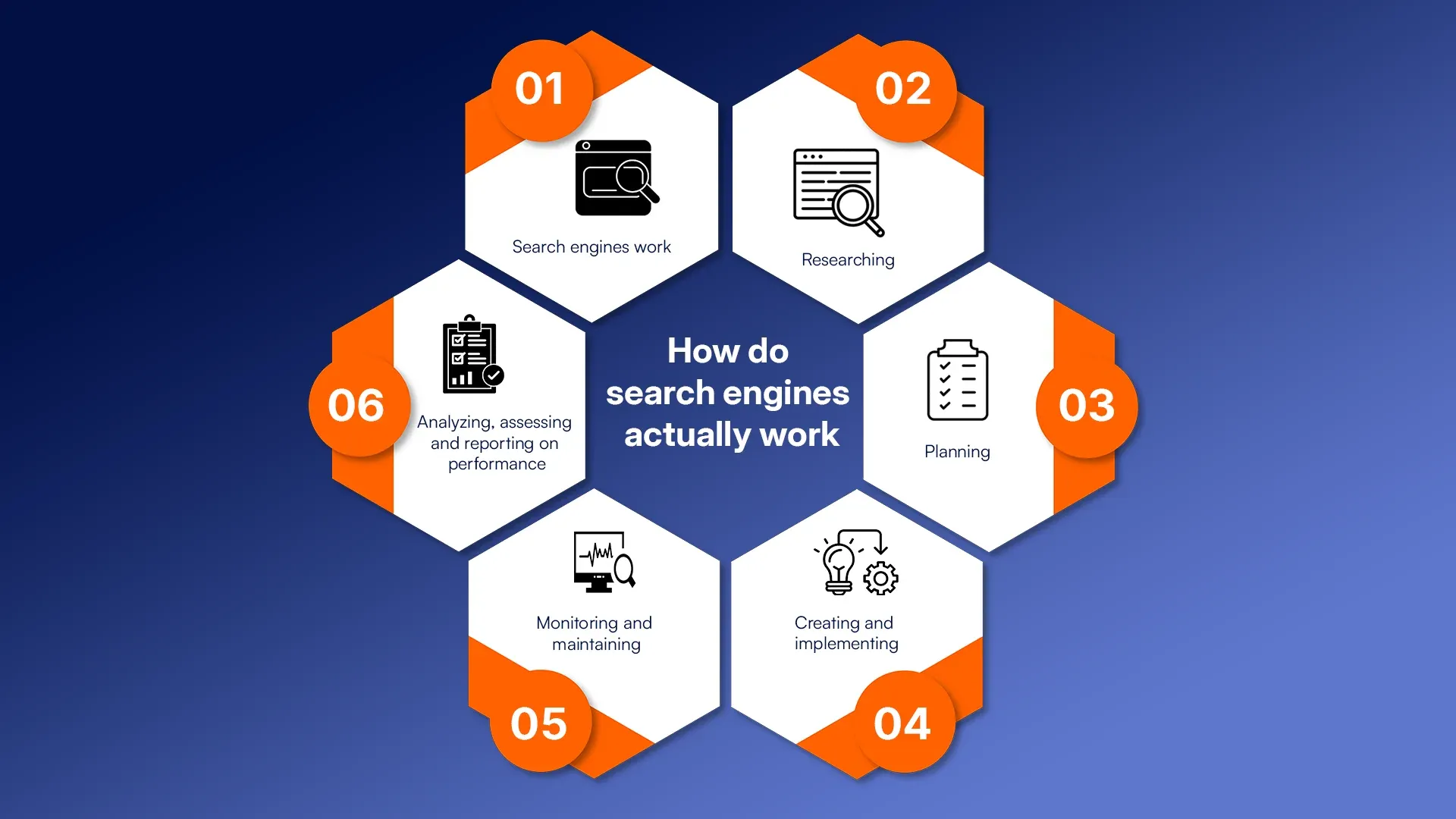 Crawling : is when the engine follows from one link to another and records all information that can be found on each page.
Crawling : is when the engine follows from one link to another and records all information that can be found on each page.
Indexing : refers to storing and organizing such information in a big database coming from crawled web pages.
On the other hand, search engines use elaborate algorithms to grade the relevance of every webpage to the entered query of the user.
A few factors included in this analysis include relevance of the content on a webpage, quality and authority of the webpage, and even location of the user.
Also read this article : What are the primary goals of SEO
Why Is SEO Important?
SEO is crucial because it improves website visibility, driving organic traffic. It helps businesses reach their target audience, build trust, and rank higher on search engines. Effective SEO increases credibility, user engagement, and conversion rates.
1. Traditional Organic Results
SEO plays a very important role in achieving good rankings in organic search results. Upon searching for keywords, search engines list sites that are a match for a query and rank them based on relevance.
This makes ranking very vital since it directly translates to visibility and therefore an opportunity to attract prospective customers.
2. SERP Features
Besides organic results, SEO is also very important for gaining SERP features. Those featured snippets, and rich results, really mean great boosts in click-through rate and engagement of your website.
By carefully optimizing the structure and content of your website, you can end up in the top SERP rankings on Google, too!
What Are The Three Pillars Of SEO?
The three pillars of SEO are On-Page SEO, which optimizes content and keywords; Off-Page SEO, focused on building backlinks and authority; and Technical SEO, ensuring website infrastructure like speed, mobile-friendliness, and indexing for search engines.
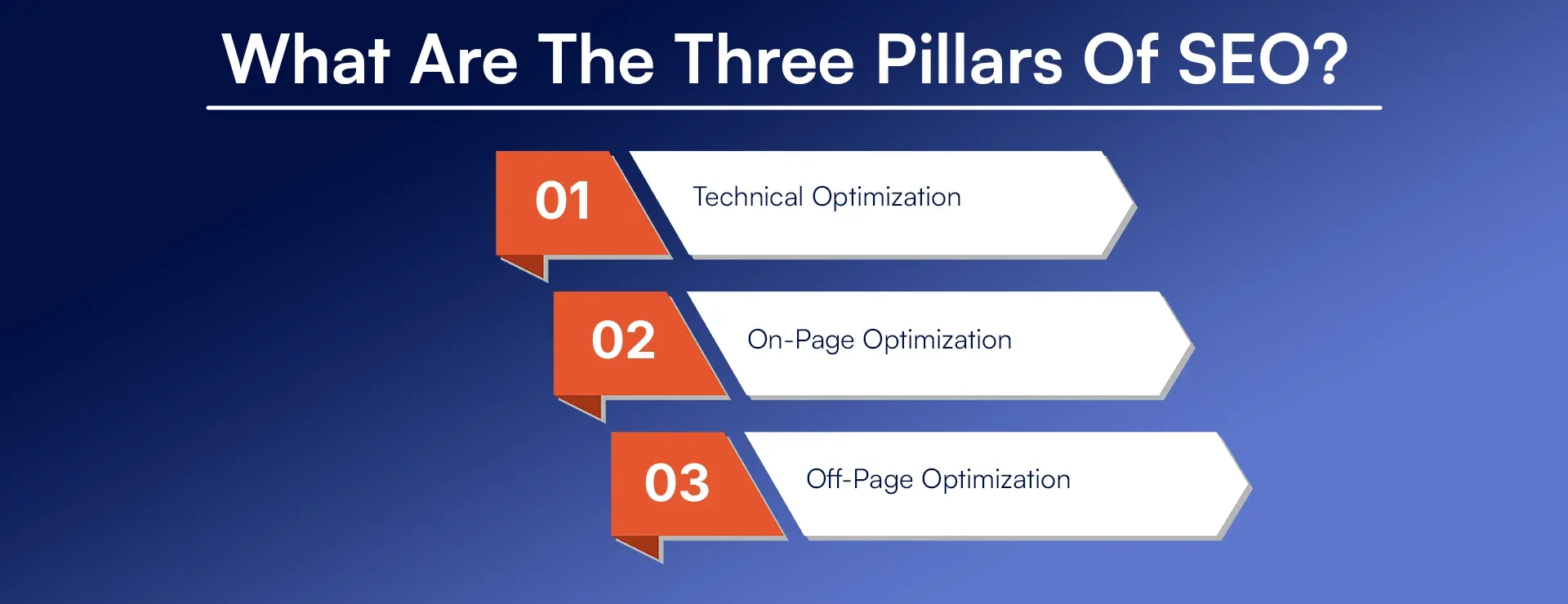
1. Technical Optimization
This is usually targeted at ensuring that all your websites remain sound technically, and accessible to all search engines.
These include optimization factors such as speed of your website, its mobile-friendliness, XML sitemaps, and robots.txt files.
2. On-Page Optimization
It concerns optimizing individual web pages on a website so that it appears relevant and appealing to search engines.
The optimization process may include keyword research, title tags, meta description, header tags, alt text in images, and quality of content.
When all these on-page elements are optimized, the ranking will increase, and so will the visibility.
3. Off-Page Optimization
In simple words, off-page optimization means creating quality backlinks from others' authoritative sources to your website.
These backlinks help the search engines and the authorities understand that your website is relevant for others.
Among such techniques, the most important ones to help in off-page optimization include guest posting, social media marketing, directory submission, and relationship building with other websites.
How do search engines actually work?
Search engines work by crawling the web to discover pages, indexing content to understand relevance, and ranking them based on algorithms. They analyze factors like keywords, backlinks, and user experience to deliver the most relevant results to users.
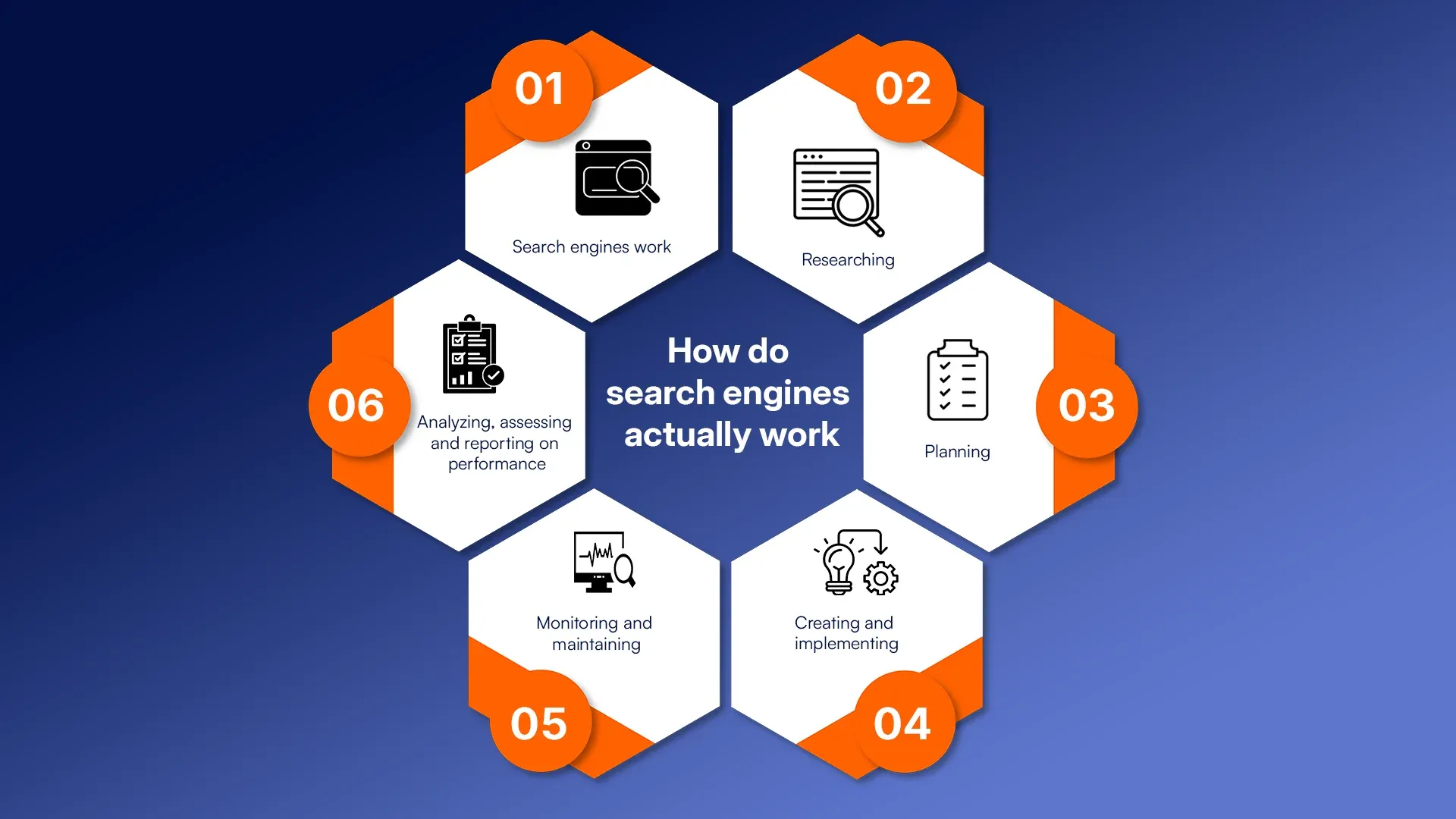
1. Understanding how search engines work
- Crawling
Search engines use certain bots called 'crawlers' for crawling the web. These bots crawl from one web page to another through links present on the pages and collect data from the sites.
This helps to index the text, images, and other elements present on the pages.
- Indexing
After gathering the content present in a website, the search engine would store it in a huge database known as an index.
The index would be created in such a way that when the search engines need to answer queries of the users, then the access and retrieval of data could be very fast.
- Ranking
Search Rankings Once the user has inputted a query, the search algorithm will consider relevance and quality on the indexed web pages.
The results are then returned, ranked in descending order with respect to perceived importance.
2. Researching
- Audience Research
It involves the definition of the target audience and understanding their needs and pain points-development of buyer personas. In this way, you will be able to create marketing that speaks to your ideal customers.
- Keyword Research
It helps understand the terms and phrases your target audience is searching for. You will be able to analyze search volume and competition to find relevant keywords to include in your website content.
- Competitor Research
This includes researching the competitor websites, their strategies of marketing, and SEO strategy. The strengths and weaknesses in this help highlight and thereby differ and improve your approach.
- Brand/Business/Client Research
It is very important to have a proper understanding of what your brand identity is, analyze the goals of your business, and understand how this SEO strategy fits into overall objectives.
- Web development research
This will provide an overview of your website structure, show technical problems, and analyze the content. This may make you note where to improve for better optimization of your website for search engines.
- SERP Analysis
Analysis of your standing for relevant key phrases and competitor dominance of the SERP features. This will enable you to understand opportunities whereby you could improve the visibility and ranking of your website.
3. Planning
Optimizing SEO requires clear planning and strategizing. Start SEO planning by defining your clear goal, optimum research, and design a well-thought-out strategy.
4. Creating and implementing
Use technical and off-page aspects to optimize the content of your website by following the strategy through to the end.
Regularly create excellent, pertinent content, and improve the website's technical SEO and backlink profile.
5. Monitoring and maintaining
Continuously monitor your website performance with analytics.
Stay updated about changes in the search engine algorithm and other trends in the industry, and refresh contents on your website regularly.
6. Analyzing, assessing and reporting on performance
Track your SEO performance and related metrics from time to time to perform data-driven decisions. Also create comprehensive reports to demonstrate the value of your SEO strategies.
What are the main goals of SEO?
The main goals of SEO are to increase website visibility, drive organic traffic, and improve search engine rankings. It aims to enhance user experience, build credibility, and boost conversions, ultimately leading to better engagement and business growth.
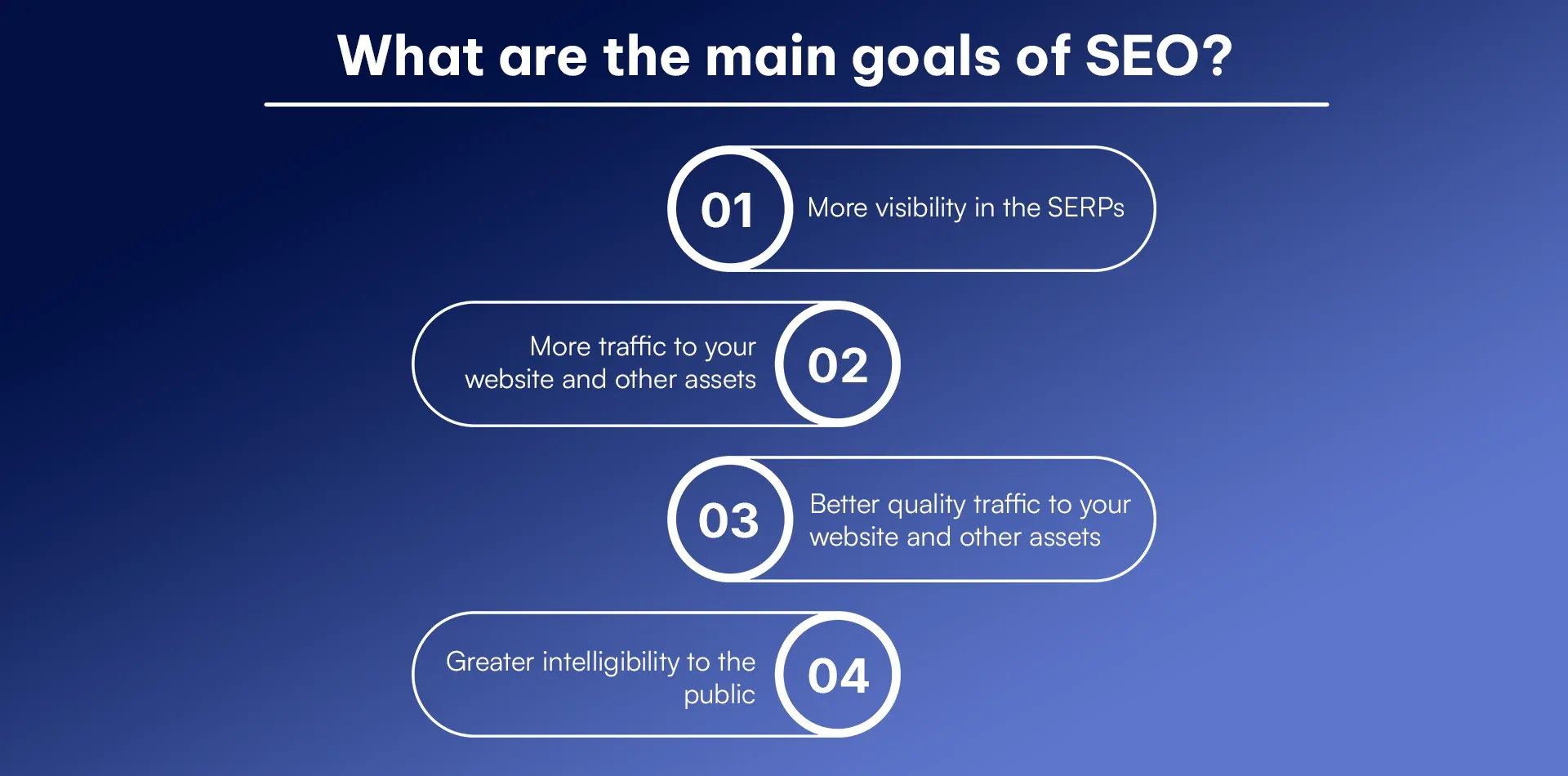
1. More visibility in the SERPs
The ultimate goal of SEO is to increase your Search Engine Pages Results (SERP) rankings. In the long run, this is what will bring in more audience for you.
2. More traffic to your website and other assets
When your SERP rankings have improved, you can naturally draw in more audience to your overall social media and other websites.
3. Better quality traffic to your website and other assets
SEO can help you to attract people who are looking for the products or services you provide, resulting in more engaged traffic.
4. Greater intelligibility to the public
SEO can also help elevate your website’s user experience, thus also helping to enhance your brand’s credibility in the process.
What are the top organic search ranking factors?
Top organic search ranking factors include quality content, keyword relevance, mobile-friendliness, page speed, secure HTTPS, backlinks, user experience, and proper on-page SEO like title tags and meta descriptions. These factors improve visibility and rankings.
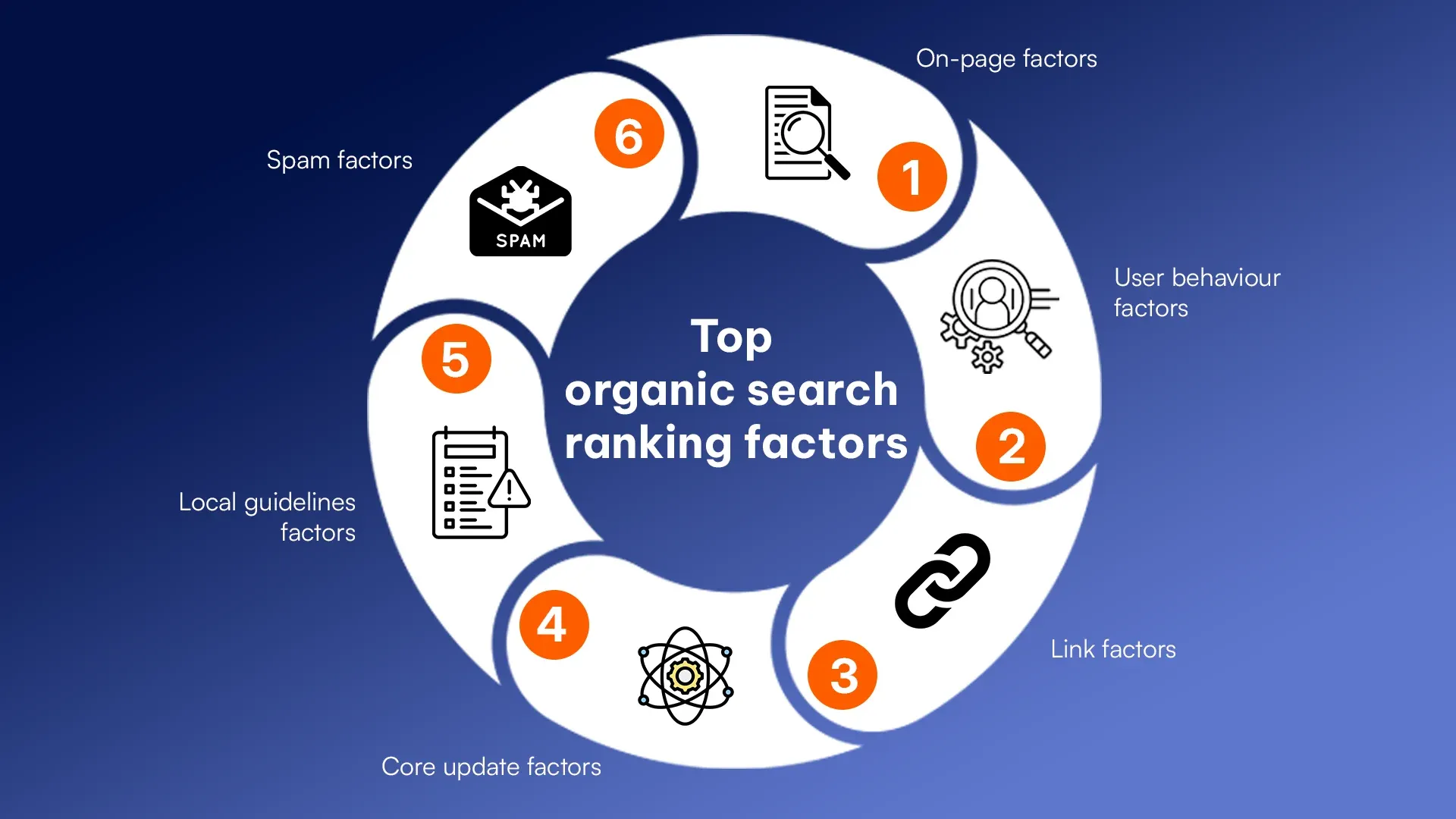
1. On-page factors
Use relevant keywords, high-quality content, and structured data to optimize your website’s content.
2. User behavior factors
By tracking other elements like bounce rate, CTR, and time spent on page, you can correctly understand user behavior and optimize your content to appeal to that.
3. Link factors
Building good quality backlinks from reputable websites will help improve your website’s authority and relevance to audiences.
4. Core update factors
Stay updated with Search engine algorithms to stay at the top of your game.
5. Local guidelines factors
Build local citations, and optimize your Google My Business profile for further improving your visibility for local searches.
6. Spam factors
Strictly avoid resorting to any spammy practices like keyword stuffing, or link farms. Maintain a positive relationship with search engines.
E-E-A-T
E-E-A-T stands for Experience, Expertise, Authoritativeness, and Trustworthiness. It’s a framework Google uses to assess content quality. Websites with strong E-E-A-T provide valuable, credible information, boosting their search rankings and user trust.
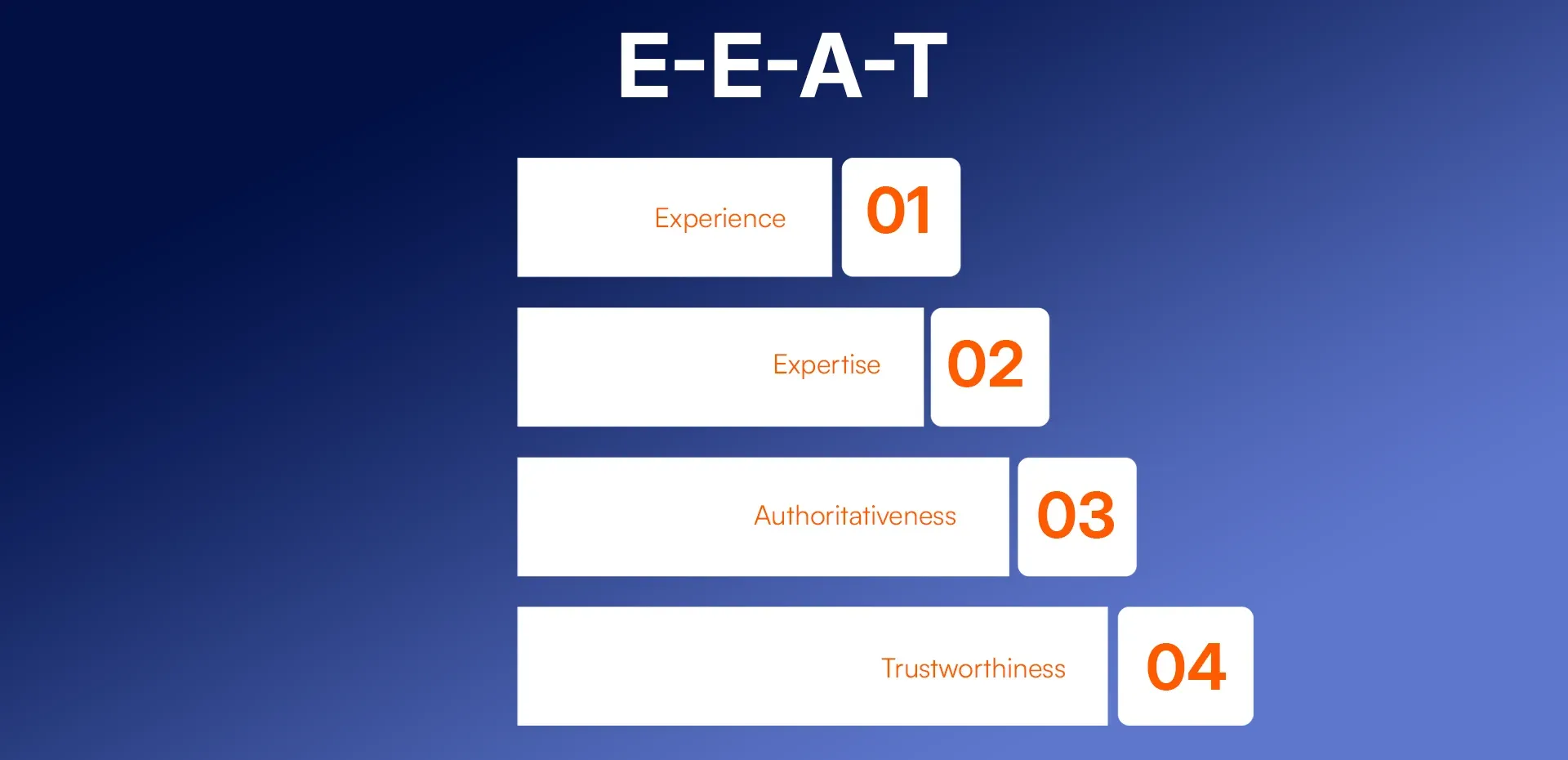
- E- Experience
Your experience with a topic is often reflected in the content of your website. This also allows your audience to relate better with your content.
- E- Expertise
Expertise is another thing that people seek when looking for solutions or answers online. If you possess expertise in regards to anything, your content has better chances of making it to the top.
- A- Authoritativeness
This refers to how much agency you have regarding any particular subject, and the audience that considers your website a go-to source for the same. This makes you an authority figure for your particular niche.
- T- Trustworthiness
This refers to the overall trust you have gained from your audience over the time you’ve been posting content. This also relates to the overall reliability and transparency of your website’s content.
This is the basic foundation on which Google bases its evaluation of content quality. If you are just starting out with SEO, E-E-A-T is what you wish to have in your website.
What is an SEO strategy?
An SEO strategy or an SEO marketing strategy is the comprehensive plan that you come up with to improve your website’s SERP rankings, and ultimately, to draw in your intended audience.
How To Set Objectives For Your SEO Strategy?
Setting objectives is a vital part of all search engine optimization strategies. For this, you need to understand your business goals very well, and design objectives that align with them.
For example:
- “Optimize web pages to increase organic traffic to the website by 20% within the next 6 months.”
- “Refresh web page content to decrease the website’s bounce rate by 10% within the next 4 months.”
- “Generate 30 new leads through the website each month.”
Conclusion
A thorough SEO strategy is extremely essential to succeed in the current online business landscape.
Lucky for you, our team of professionals at RejoiceHub can provide excellent SEO services that suit your business needs. Our professionals are experienced to work across clients across industries to deliver customized solutions to drive growth and enhance your brand presence.
Collaborate with RejoiceHub to unlock the maximum SEO potential and drive your business forward by multiple levels.
Frequently Asked Questions
1. What is SEO and why is it important?
SEO is the process of improving the content on webpages and overall website, so that the website can rank better on SERP rankings. SEO is important, as it directly impacts organic traffic on your website, better visibility of your brand, and higher conversions.
2. How do I optimize my website using On-Page SEO?
Optimize the individual web pages on your website to adhere to the Search engine algorithm.
3. Where does link building fit in for SEO?
Backlinks give search engines an indication that your website has value and relevance, hence giving it a high ranking in the search results
